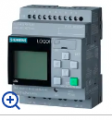I have a mechanical system I'm building and I want to use snap switches to control the order of operations. The order will be something like this.
1. Run 1 revolution of the electric motor, then stop motor.
2. Activate solenoid.
3. Activate second electric motor for 1 revolution.
4. Begin sequence again.
I see lots of relay modules with 2, 4 or more relays on the board, but they all seem to want to be computer controlled and I have never worked with anything more then 1 relay at a time in simpler circuits with no CPU involved. I've worked with R Pi's and a little with Arduinos, but want to avoid making the device more complex by using them.
So here's my noob question.
Can I drive the relay modules without the computers and if so are there specific ones that I should use? I'm looking specifically at this example, which seems to show it can be done with switches only, but I don't want to just buy something to find out it won't work.
Thanks,
GWFAMI
1. Run 1 revolution of the electric motor, then stop motor.
2. Activate solenoid.
3. Activate second electric motor for 1 revolution.
4. Begin sequence again.
I see lots of relay modules with 2, 4 or more relays on the board, but they all seem to want to be computer controlled and I have never worked with anything more then 1 relay at a time in simpler circuits with no CPU involved. I've worked with R Pi's and a little with Arduinos, but want to avoid making the device more complex by using them.
So here's my noob question.
Can I drive the relay modules without the computers and if so are there specific ones that I should use? I'm looking specifically at this example, which seems to show it can be done with switches only, but I don't want to just buy something to find out it won't work.
Thanks,
GWFAMI






